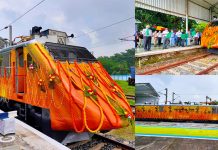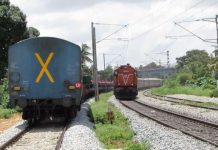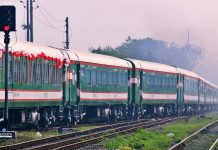Will Indian Railways new sleeper coaches look like this?
Indian Railways looks to introduce new colour scheme for Mail/Express trains! In case you are one of those travellers who is bored of seeing the blue paint scheme on Indian Railways Mail/Express trains, there is good news for you. The national transporter, in a bid to give a fresh touch to the standard sleeper coaches of Mail/Express trains is looking to test new paint schemes. Recently, Northern Railways was tasked with trying out 7 different types of colour schemes on sleeper coaches of Mail/Express trains. Railway Minister Piyush Goyal and Railway Board Chairman Ashwani Lohani recently inspected coaches painted with different vibrant colours. It was decided that a mix of teak and fawn shades with further improvements will be experimented with initially. Based on feedback, further changes will be made.
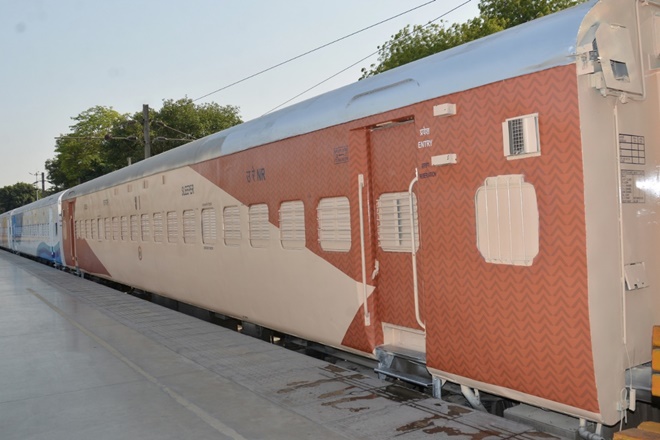 The initiative for ICF (Integral Coach Factory) designed sleeper coaches was given to Northern Railways along with National Institute of Design (NID) Ahmedabad. The new colour scheme that has been chosen will be tested on limited number of coaches first. “The colour scheme of fawn and teak has been given a tentative nod, we will make more improvements to it based on the guidelines provided by the Minister and Railway Board. Also based on feedback in the future days, we will be able to finalise on a vibrant scheme for the coaches of Mail/Express trains,” Nitin Chowdhary, Chief Public Relations Officer of Northern Railways tells FE Online.
The initiative for ICF (Integral Coach Factory) designed sleeper coaches was given to Northern Railways along with National Institute of Design (NID) Ahmedabad. The new colour scheme that has been chosen will be tested on limited number of coaches first. “The colour scheme of fawn and teak has been given a tentative nod, we will make more improvements to it based on the guidelines provided by the Minister and Railway Board. Also based on feedback in the future days, we will be able to finalise on a vibrant scheme for the coaches of Mail/Express trains,” Nitin Chowdhary, Chief Public Relations Officer of Northern Railways tells FE Online.
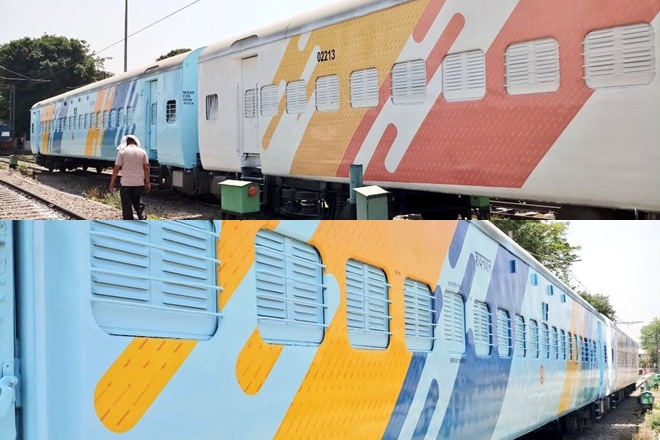
Indian Railways has been introducing several branded trains with new attractive colour schemes – be it Humsafar Express all-AC 3 tier train with blue and orange colours or the Tejas Express with bright yellow and orange hues. The new trains are being provided with anti-graffiti vinyl wrapping as well to avoid scratches and maintain clean trains. Additionally, ICF recently rolled out Indian Railways first ‘paint-less’ train. A 22-coach Antyodaya Express was handed over to Southern Railways without any paint on its exterior. This too was done as part of a Railway Board experiment to estimate the cost savings.



